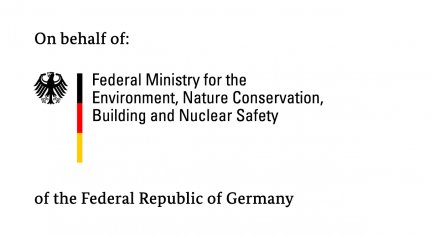Shifting Finance Towards
Sustainable Land Use
Analysis and guidance for countries and their partners from a collaborative project supported by Norway’s International Climate and Forest Initiative (NICFI), implemented by the Deutsche Gesellschaft für Internationale Zusammenarbeit (GIZ) GmbH, on behalf of the German Federal Ministry for the Environment, Nature Conservation and Nuclear Safety (BMU).
What action can governments take to align finance in the land sector to support global climate goals?
In 2015, Governments pledged to align all finance flows with climate action, one of the long-term targets of the Paris Climate Agreement. This not only calls for additional climate finance, but for the re-alignment of existing financial flows that are not yet oriented towards reducing GHG emissions. “Grey finance” by far dwarfs “green finance” today – and as long as this doesn’t change, national and global efforts to fully decarbonise economies and shift our emissions trajectory as called for by the latest IPCC analysis will remain ineffective.
Under this collaborative project, experts explored existing finance flows to the land sector, identified most promising policy options available to governments for making these flows compatible with the Paris Agreement, and provided a reporting framework for State Parties to consider and adopt ahead of the 2023 Global Stocktake.
The outputs of the project’s inter-related workstreams are presented here alongside additional sources, in a package of five reports, including:
Main Report
How does public finance influence land use practices and GHG emissions? What are the main available policy instruments? And what can policy makers do practically to redesign options for closer alignment with climate goals?
Reporting Framework
Drawing from previous discussions among Member States and experts, we propose a practical format for countries to report their respective progress and actions towards PCA Article 2.1(c), ahead of the 2023 Global Stocktake.
Input Paper
Reviewing the literature and discussions around the reform of agriculture and food systems, local economies and global trade, the paper identifies specific opportunities for the repurposing of public support to agriculture in order to align its practices with the Paris goals.
Case Studies
Illustrating local policy contexts for the “greening" of finance flows that informed and applied the project’s analysis: at country level, in Colombia, reflecting its specific national context and challenges in the land sector; and for the European Union of its 27 Member States.
MAIN REPORT
Aligning public incentives with the goals of the Paris Agreement
Governments have a range of policy options available to them, among them targeted financial incentives with the capacity to greatly influence practices and emissions in the land sector (currently resulting in about a quarter of all anthropogenic GHG emissions). At the same time, land also serves as indispensable CO2 sink with substantial mitigation potential that requires thoughtful public policy design and decisions to ensure that finance is directed to activities that avoid or sequester GHG emissions, while also improving the resilience of rural livelihoods.
This report illustrates public finance instruments and how they influence land use practices and associated emissions, and showcases how policy instruments can be redesigned to consider climate goals based on practical examples from countries. The report gives particular attention to practical aspects around options for redirecting agricultural subsidies and financial markets.
REPORTING FRAMEWORK
A framework for reporting on Article 2.1(c) of the Paris Agreement
The 2015 Paris Agreement set three long-term goals in its Article 2: for countries to limit the increase in global warming to well below 2°C, while pursuing efforts to limit warming to 1.5°C; to foster climate resilience and low GHG emission development; and to make finance flows consistent with a pathway towards low GHG emissions and climate-resilient development.
Meeting the goal set by Article 2.1(c) requires action to increase climate-positive finance, and to reduce and redirect existing flows that are high-emission or increase climate change vulnerability – including through changes in the institutions and systems that govern them. The first Global Stocktake presents an opportunity to include reporting on Article 2.1(c), on the basis of guidance currently lacking. This paper proposes a common framework allowing both state and non-state actors alike to report on the climate-consistency of finance flows in the AFOLU sector.
INPUT PAPER
Repurposing of public support to agriculture
Agriculture plays a particularly prominent role in the challenge of meeting climate objectives – while also lying at the intersection of related priorities like food security, economic development and poverty reduction. Agriculture today is both a direct source of emissions and a key driver of deforestation, biodiversity loss and broader environmental degradation. Public support to agriculture and farmers is substantial in most countries and has grown further over the past decade – amounting to more than USD 600billion per year in the OECD and 11 major developing economies (more than 50 times the amount dedicated to climate finance in the land sector).
This paper presents the background and discussed options for effective land use policies that repurpose and align these funds reduce emissions within competing policy objectives.
CASE STUDY
A case study from Colombia
More than half of Colombia’s GHG emissions come from the land sector – with deforestation as the primary contributor (accounting for almost a third) and another major contributor. Recognising the importance of the sector as a major source of emissions, the country has committed to take concrete steps to promote sustainable growth and the greening of the land use sector.
This case study reviewed the situation and opportunities for the redesign of relevant policy instruments in Colombia, led by a local team of experts.
CASE STUDY
A case study on the European Union
In the EU, the agriculture, forestry and other land use (AFOLU) still holds an enormous potential to reduce emissions and further increase carbon sequestrations at regional and global levels, especially in the agricultural sector.
This case study reviewed of the situation in the European Union and analysed the existence and use of policy instruments, as well as opportunities for their redesign in support of a sustainable land sector as part of the objective of achieving overall net-zero emissions in the European Union.






